
Let the tentacles of ecology reestablish themselves in the Ria, that is the city of Sydney


Let the tentacles of ecology reestablish themselves in the Ria, that is the city of Sydney
Hybrid Question : If White bay becomes a place with rich habitats, it will provide services for creatures while providing a space to encourage the public to interact with nature for the local community?

Principle1: Restore the local ecosystem
Objective 1:
Rebuild habitats for animals and plants to promote the improvement of biodiversity
Objective 2: use a wetland water management system to realize water circulation
Principle 2: Create a green public space and give the community new value
Objective 1:
Design a place that satisfies the in-depth interaction of the public
Objective 2: Enhancing the accessibility of the venue

-Identify opportunities for site ecological restoration
Issue:
+ Limited existing vegetation area around The White Bay, lack of green open space on the foreshore.
+ Flooding/pollution
+ Weak connection to the residential area
+Scarcity of plant communities and habitats
Opportunity:
+ Increase green space. (Replace the cement floor with lawn or wetland)
+ Increase access to connect with residential areas
+ Good water management
+ Restore the local ecological environment






+ The residential area in the north and west is separated by cliff and retaining wall of White Bay and Glebe Island.
+ An opportunity for the design of water system.

+ The low permeability of the hard surface of the cement floor built by reclamation is the direct cause of flooding. Due to the lack of green space, rainwater runoff is not filtered, and heavy metal substances in the original soil will flow into the sea together, causing marine pollution.
+ Sea-level rise
+Find a way to solve the problems of flooding and pollution caused by rainwater runoff, such as wetlands, rain gardens
+ Due to large-scale urbanization, the coastline in 1788 has undergone major changes over time.
+ Past industrial activities have polluted the environment, and the ecosystem has been destroyed
+How to use the landscape to alleviate the long-term pollution of the shoreline?


It shows that the Balmain Peninsula and nearby areas have an amazing number of native species
Source: Bionet - Atlas of NSW wildlife map


-Explore the level of interaction through different types of interactive landscapes.

As participants walk and stroll along the aisle, colours and light will interact with participants.

Jeanne d'Arc Square, France - The revolving bench
The revolving bench changes the rules and regulations of the venue, and change the space according to the needs.
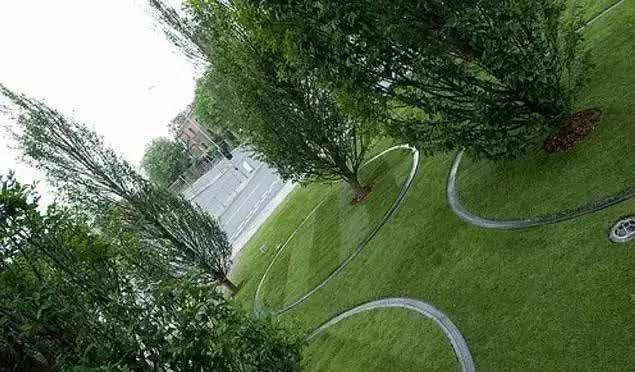
When the switch is activated, the tree will rotate. Visitors can interact with the trees.

Copenhagen- The forgotten giant
Made from discarded wood and fallen trees in the forest. They have different shapes and are hidden in different places

Stage 1:
5 Years
Governance of water pollution, improve the soil environment and establish landscape types
10 Years
Stage 2:
Rebuild ecological system to realize a biodiverse rich area on this site
50 Years
Stage 3:
Add interactive landscape, let the people and nature coexist harmoniously, and give the community new value


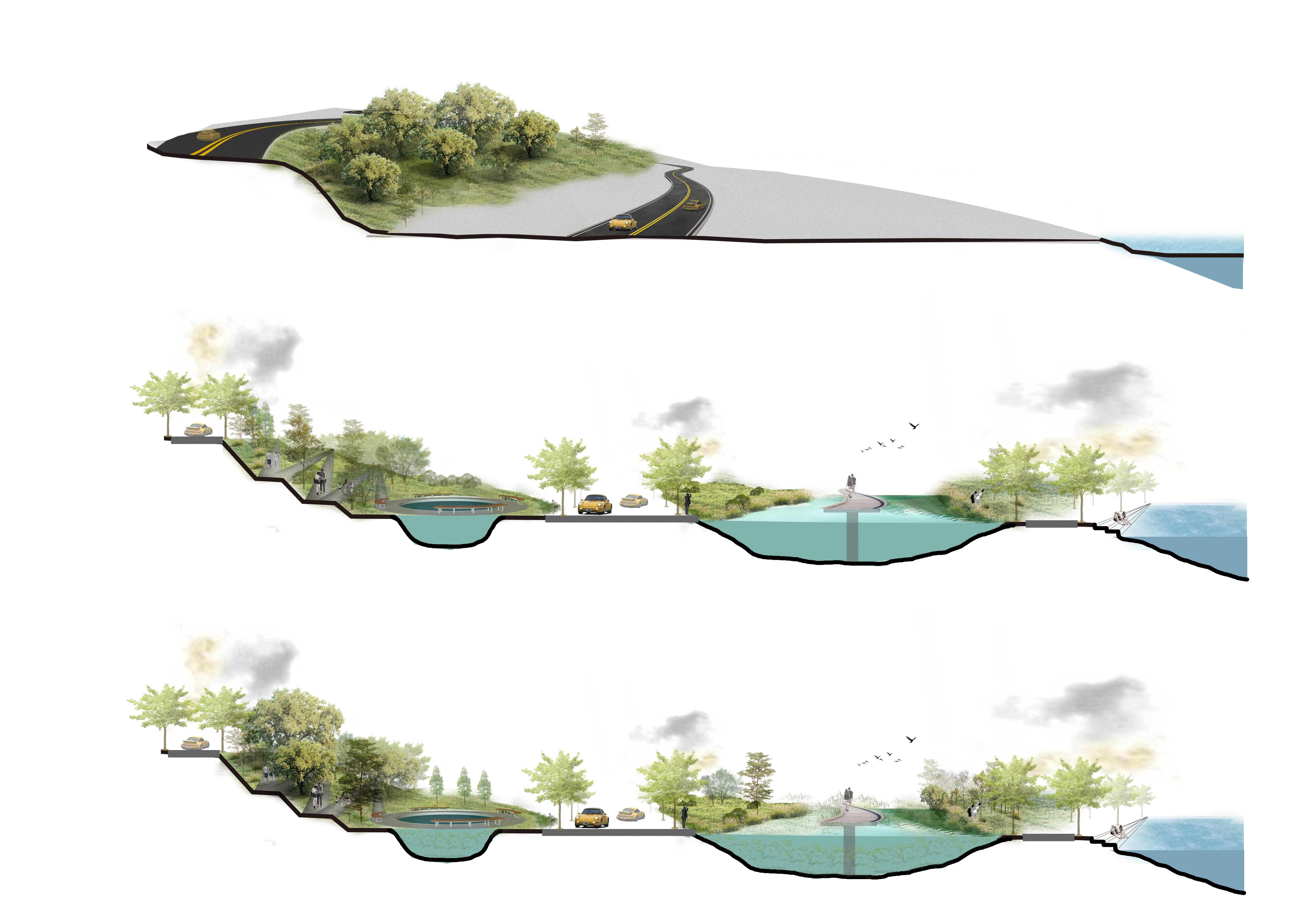
Analysis of contaminant components in soil


Introduce decomposing enzymes and other organic materials to achieve the purpose of decomposing pollutants
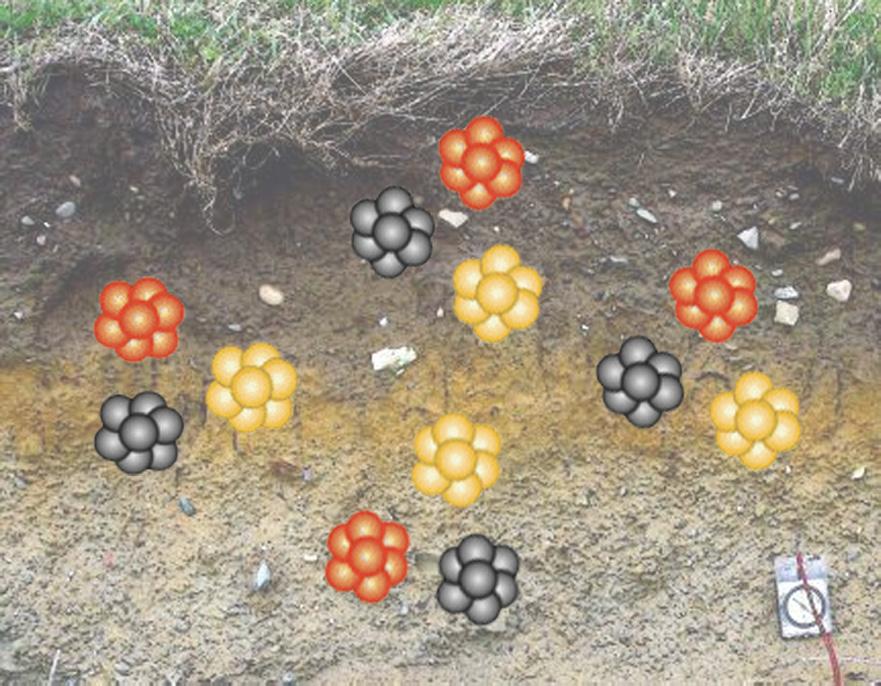
Plant volatilization
Add microorganisms to the soil to digest accumulated heavy metal pollutants.
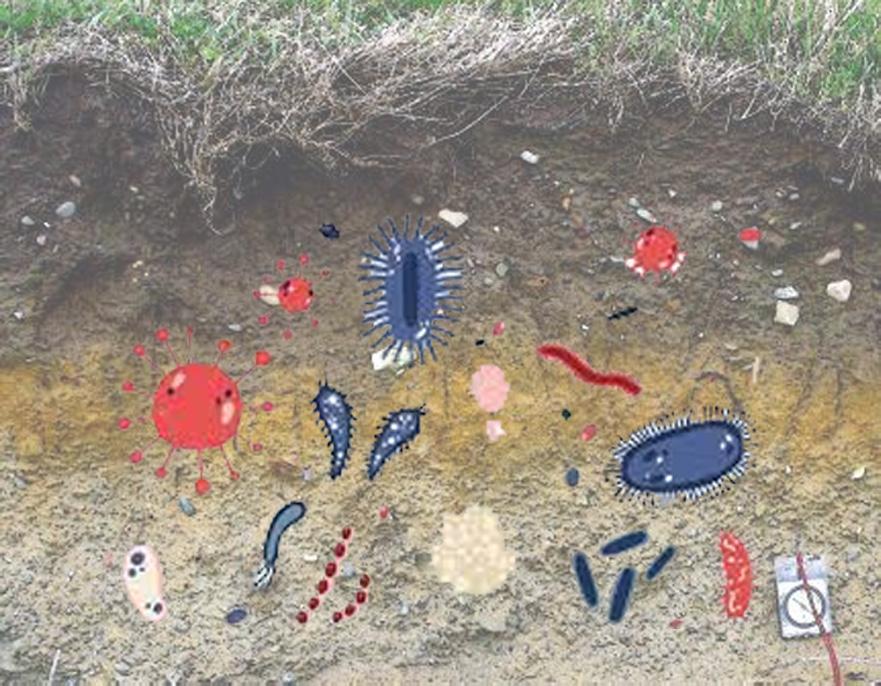
Gradually remove pollution through a bioremediation system.
Plant degradation

Rhizosphere degradation
+ Using the landscape to intervene in concrete land, treatment of pollution, rebuild ecosystem, and regenerate biodiversity

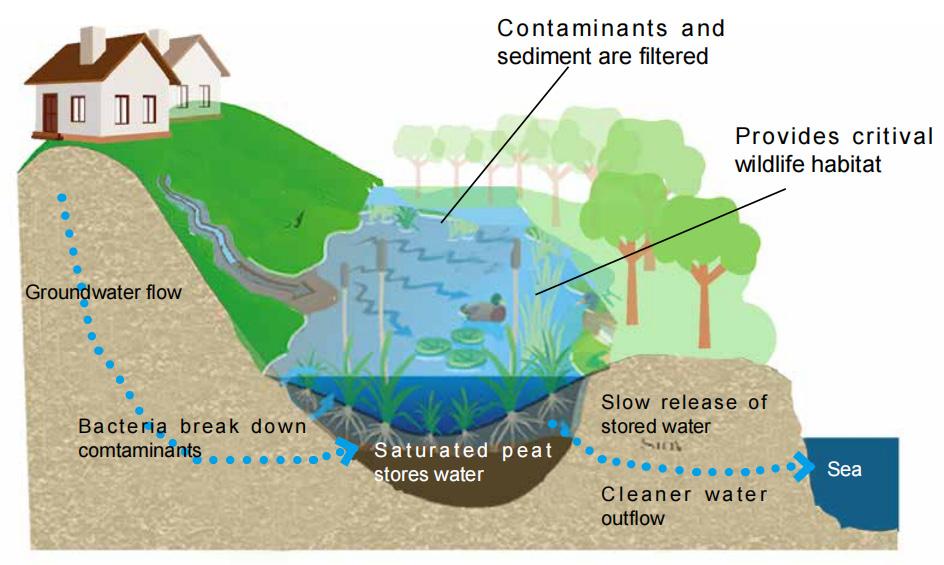





+ Increased habitat

+ Connect the residential area on the cliff with the that the terrain has site through a rampway, enhanced accessibility




Purpose
Water flow directly into the ground
Water flow is buffered and fillter


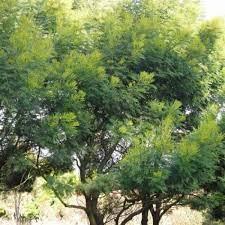
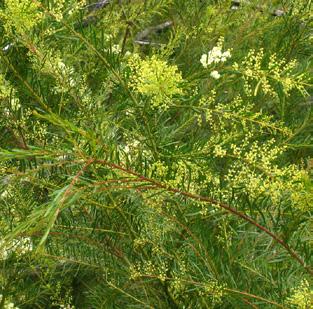



Biological returning to the Sydney
Plant absorption
Soil adsorption
Microbial layer Store water
Drain pipe
+ Wetland parks can provide habitats for animals and plants, and their circulatory system can consciously allow the public to interact with water bodies.
+ Wetlands help to clean the water and collect stormwate, effectively prevent flooding



Relying on buildings to create a small ecosystem to create habitats for local insects

Vegetated Mat
Retention Fleece
Drainage/Fillter
Root Barrier
Conventional Roff Assembly


Establish drainage system through existing terrain, purify street water and rainwater to store
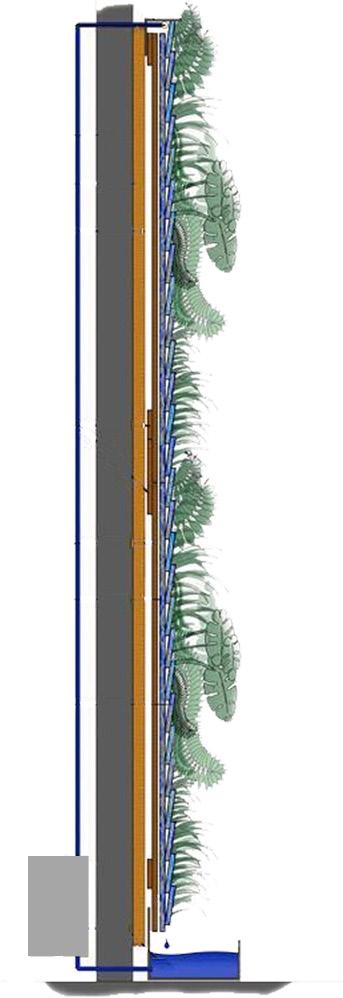


Green Wall Green Roof Main Street



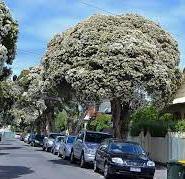


Green spaces are regardless of size. In addition to parkland, residents can also create habitats for wild animals on their buildings, connect the city and nature, create new urban landscapes, and provide wildlife corridors.
5 Year
10 Years
Years
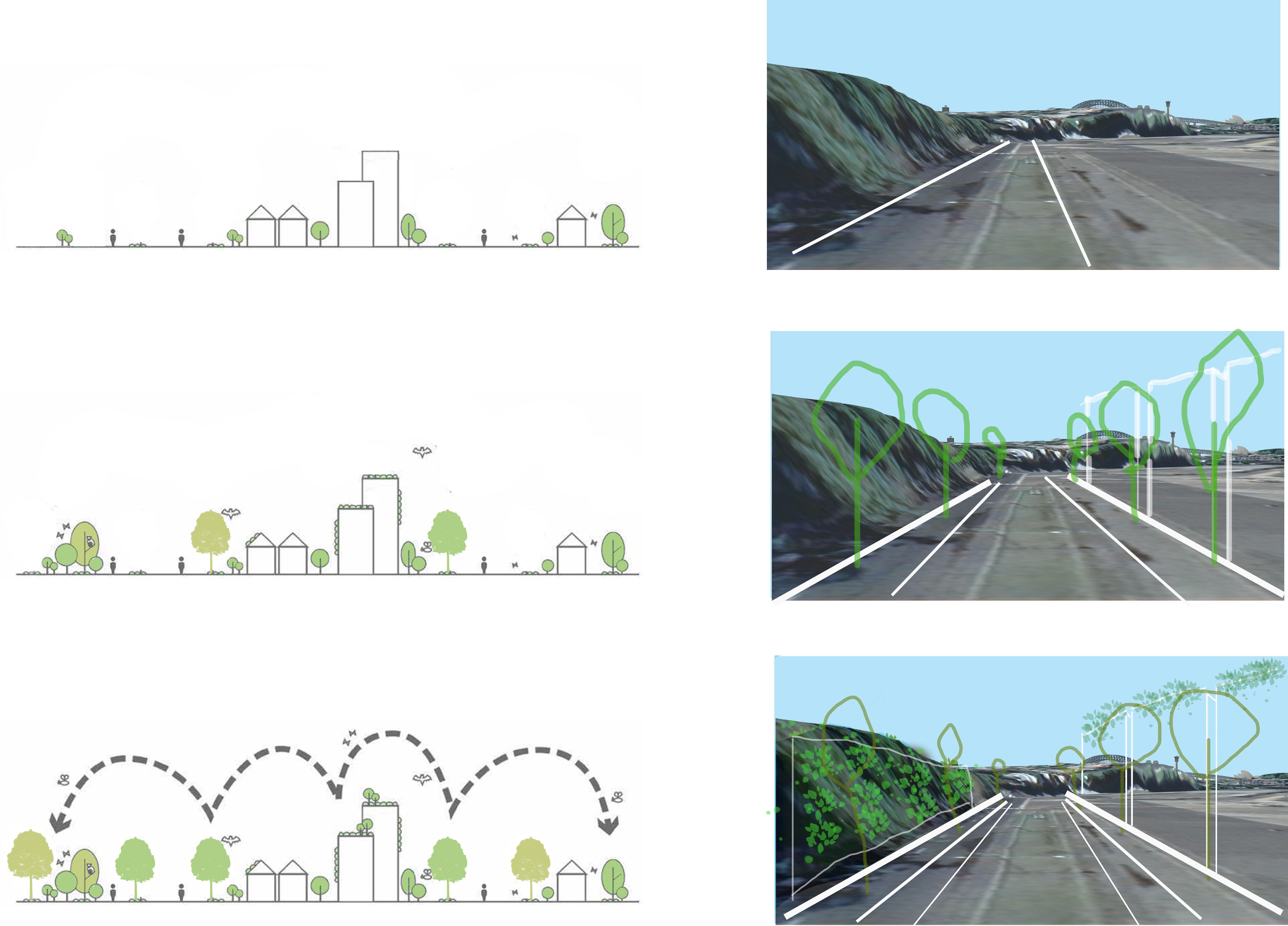
+ Provide shelter for marine animals and provide breeding habitat
+ Provide foraging places for fish
+ Stabilize sediments, prevent re-suspension of sediments, and improve water clarity
+ Cleaner water promotes the recovery of aquatic plants


Living Seawall 1 Year 5 Years
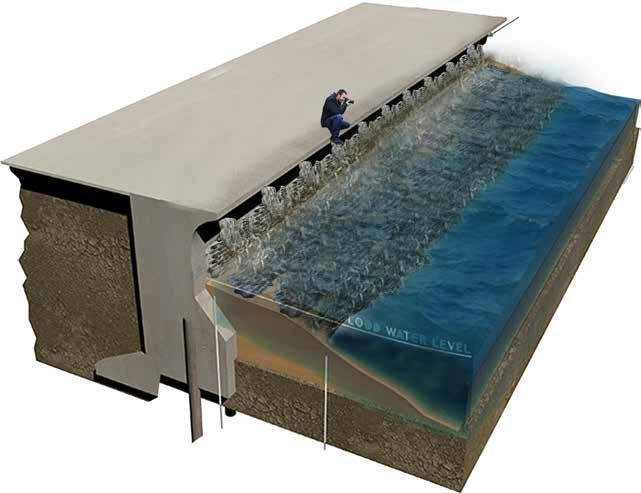
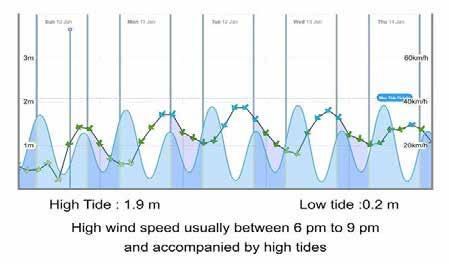

There is a circle under each tree and a button near the circle. When the switch is activated, the tree will rotate, visitors can interact with the tree.

Provide visitors with a resting place and close to observe aquatic plants
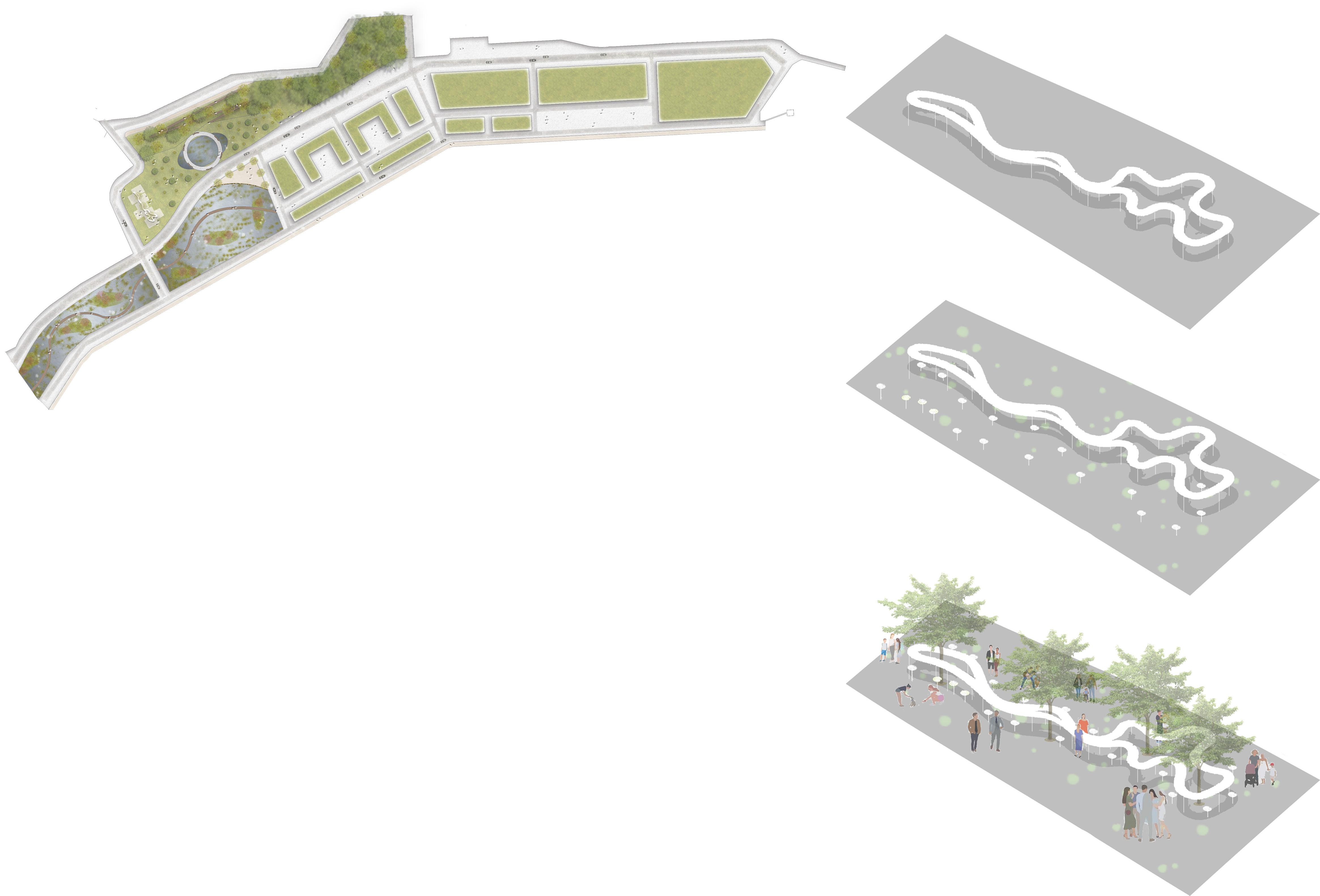
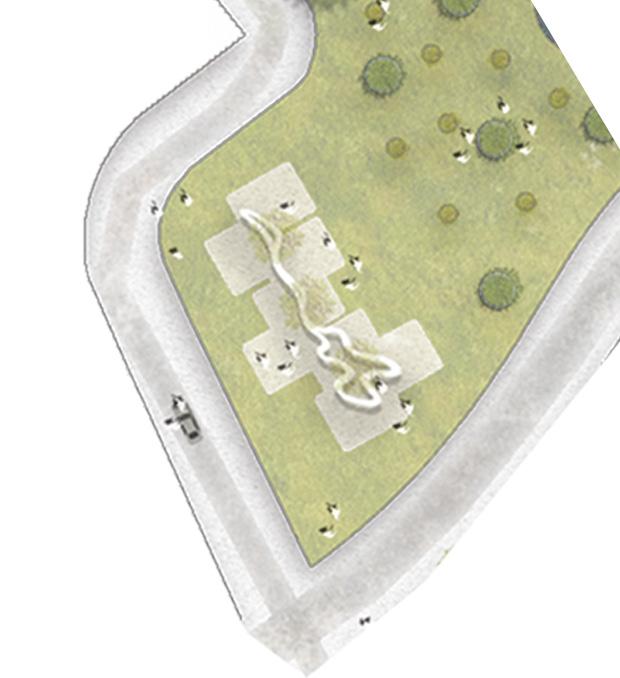
+Provide venues for events/festivals
+Encourages the-creation and social cohesion within
Planting trees helps improve and beautify the environment and provide shadows for the public to achieve a good human user experience.
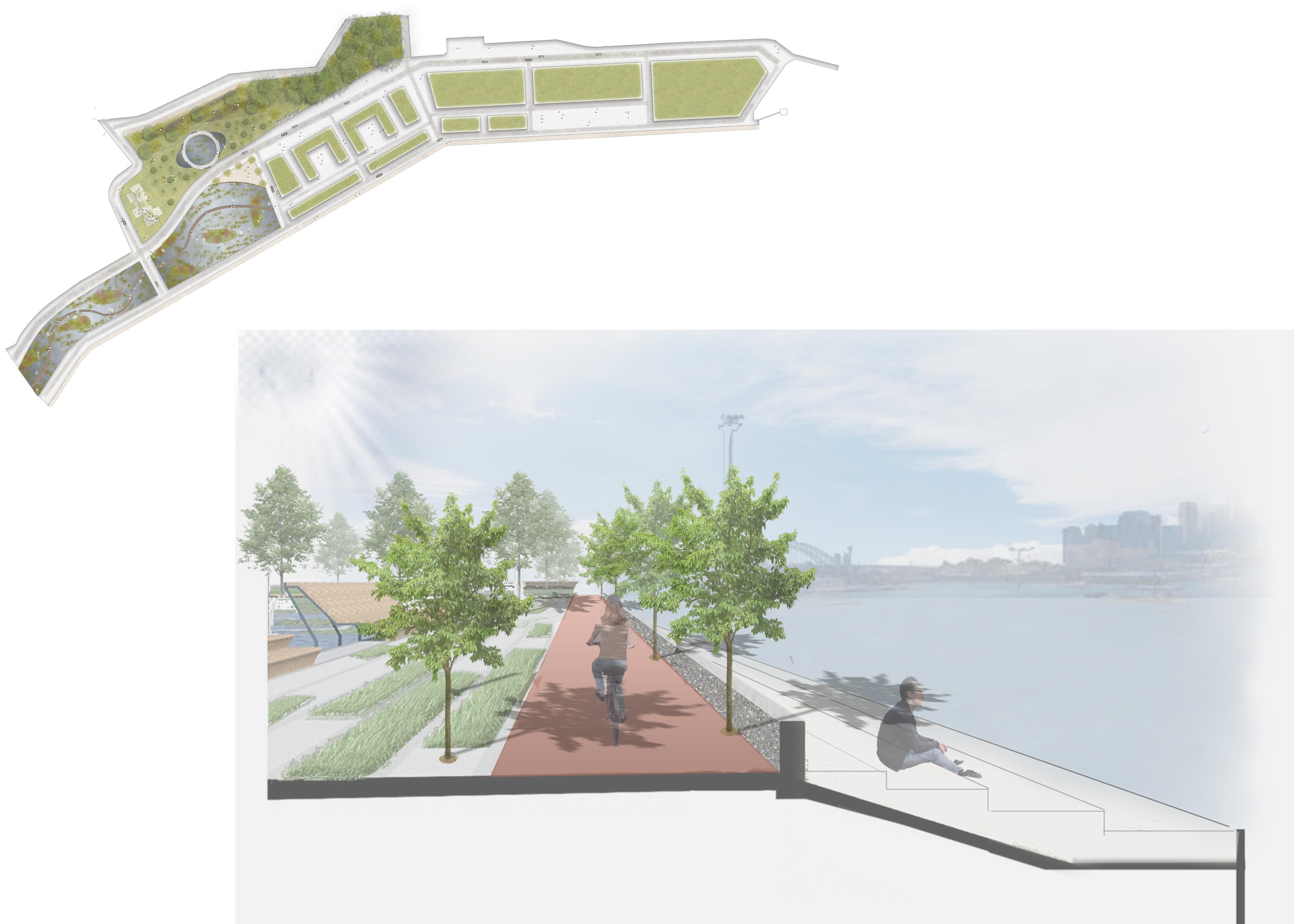
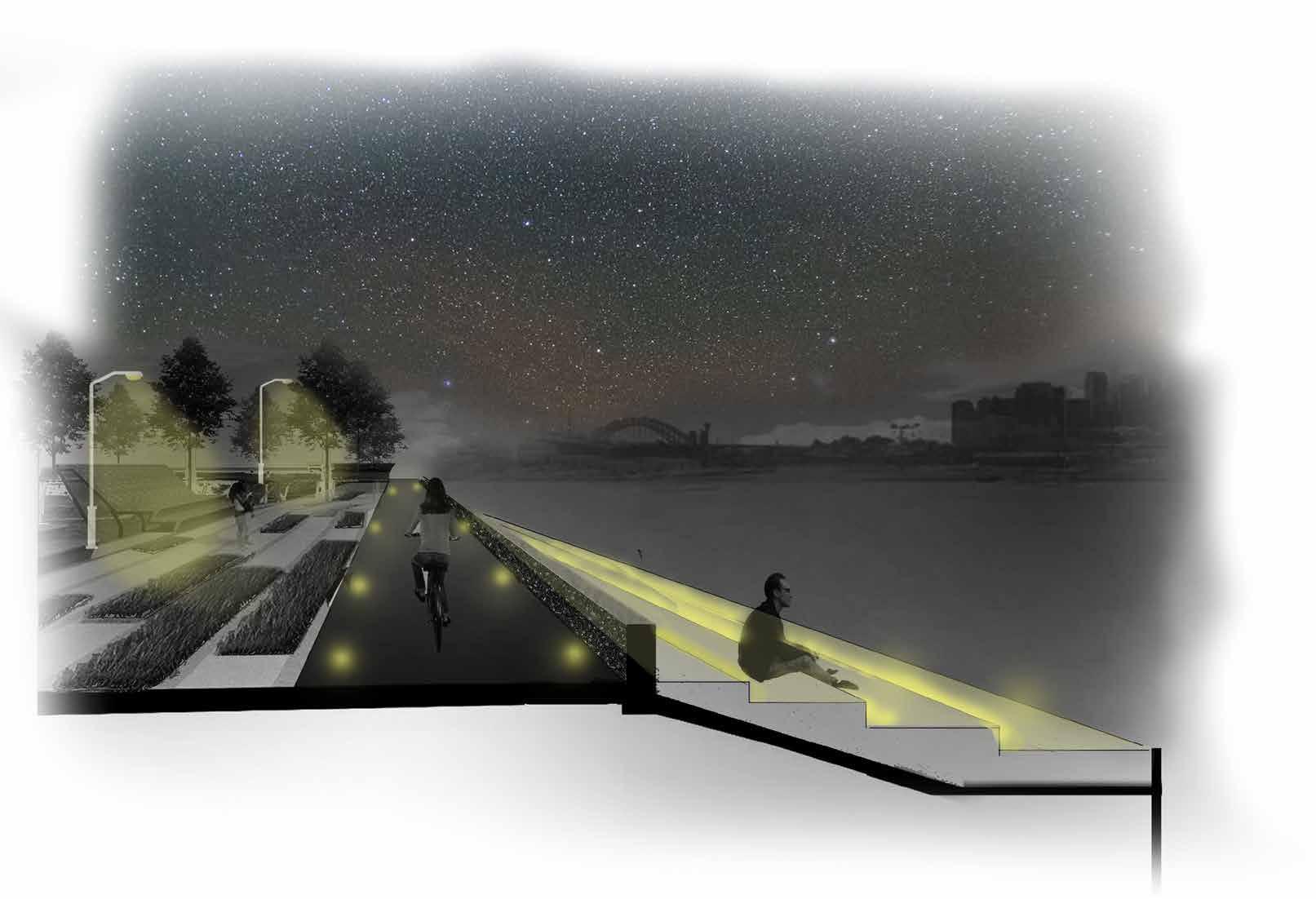
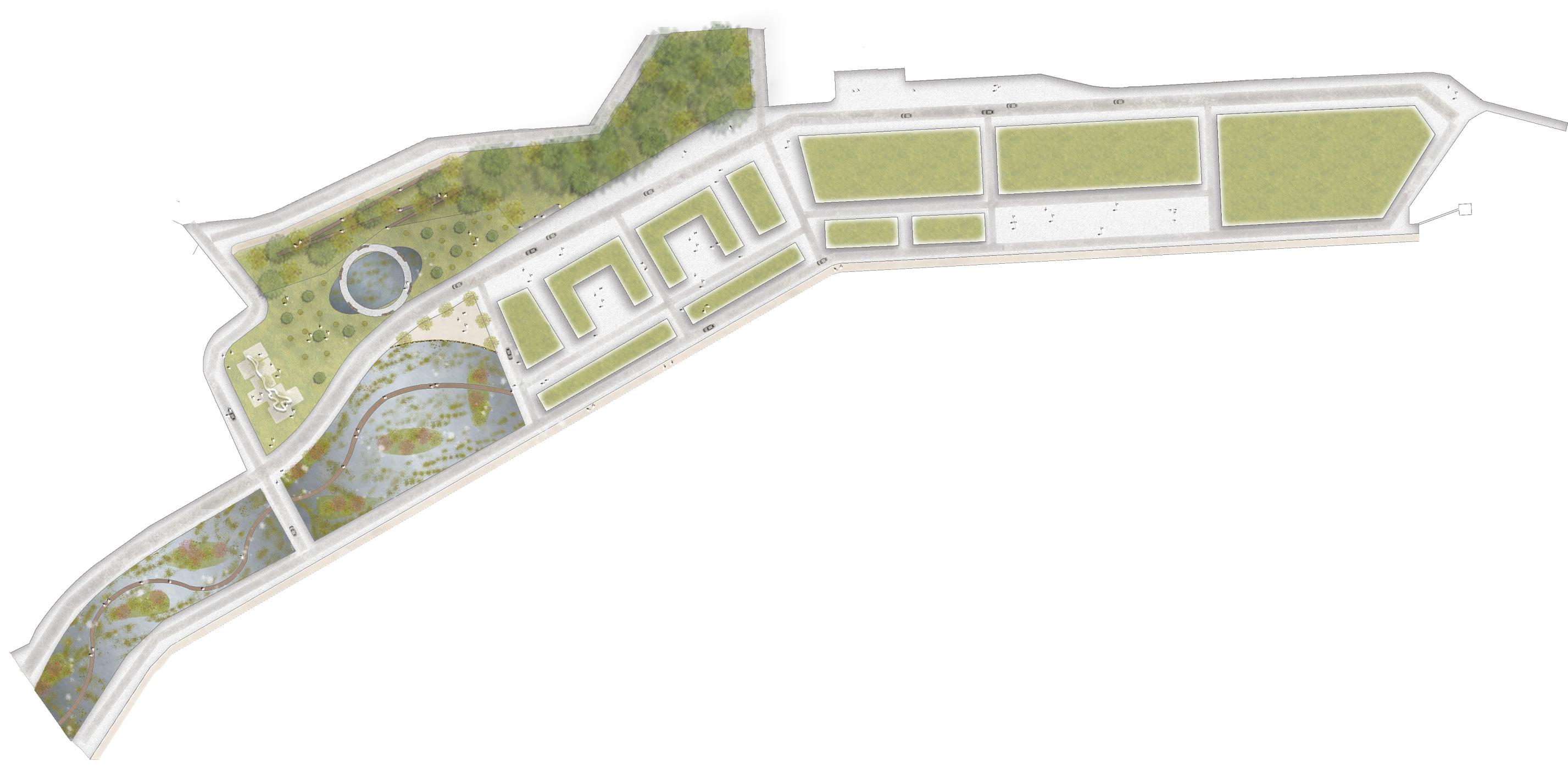
The street section shows the distance between nature and people. Close to a good environment makes people relax

